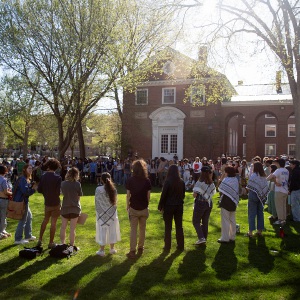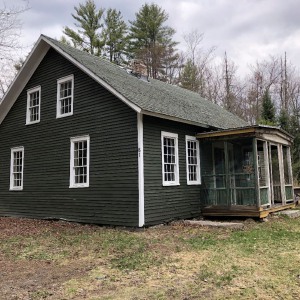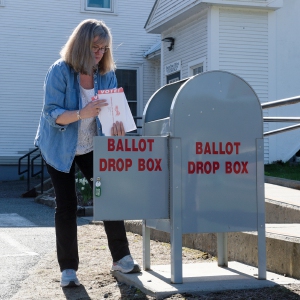‘Unintended consequences’: Concern mounts in Montpelier about the newest changes to education finance
| Published: 01-23-2024 2:08 AM |
In a letter directed toward school boards and superintendents on Friday, two leaders of legislative tax committees warned of the “unintended consequences” of the state’s newest education finance law, which, they suggested, could have districts trying to spend “free money.”
These fears come as Montpelier’s education finance analysts predict education property tax increases will top 17%, driven by a predicted 12% increase in education spending.
Conversations around education finance — often lamented as one of Montpelier’s most complicated and least-understood policy sectors — have taken on an alarmed tenor as lawmakers and Gov. Phil Scott’s administration fear the latest changes to the system might be driving up education spending in unexpected ways.
Now, lawmakers must grapple with their most recent rejiggering of education tax law during a uniquely challenging budget season.
Last year, the Legislature passed Act 127. Put simply, the law was meant to direct education money toward students who need it by providing schools with more money to educate students who are more expensive to teach. Ideally, that change in “pupil weighting” would create a more equitable funding structure.
As a result, wealthier, more urban districts with fewer English language learners saw their pupil weights decrease, which would require those districts to increase taxes to pass the same budget as the year before.
To soften that change, Act 127 capped increases to the homestead property tax rate at 5% for the next five years. (The cap does not consider the effects of the Common Level of Appraisal, which can further increase taxes.) Through the new law, however, districts can increase per pupil spending up to 10% this year without triggering any further state-level review, regardless of Act 127’s effect on their pupil weights.
If a district’s per-pupil spending increases by 10% or more, a district must submit its budget to the state for a tax rate review led by the Agency of Education. The review would decide whether the increase in spending is “beyond the school district’s control or for other good cause.”
Article continues after...
Yesterday's Most Read Articles
 Dartmouth administration faces fierce criticism over protest arrests
Dartmouth administration faces fierce criticism over protest arrests
 Hanover house added to New Hampshire Register of Historic Places
Hanover house added to New Hampshire Register of Historic Places
 Sharon voters turn back proposal to renovate school
Sharon voters turn back proposal to renovate school
If the budget is deemed to contain “excessive increases in per pupil education spending that are within the school district’s control and are not supported by good cause,” the district’s property taxes would not be capped.
With the cap in mind, lawmakers and the Scott administration think school districts may be packing extra spending into their budgets during a rare time when those increases won’t necessarily be directly felt by all of their taxpayers. Current predictions indicate a “majority” of districts will hit the 5% cap.
The concern, then, is that districts may increase spending in the next five years to utilize the cap. One idea thrown around is that because Vermont’s schools have hundreds of millions of dollars in deferred maintenance, towns might include extra money toward construction.
In the open letter on Friday, House Ways and Means Committee Chair Rep. Emilie Kornheiser, D-Brattleboro, and Senate Finance Committee Chair Ann Cummings, D-Washington, said they are “increasingly and seriously concerned about the use of the 5% threshold set forth in Act 127.”
“The threshold was designed to help the few districts who would experience the most extreme reduction in weighted pupils, so they could build a gradual glide path through a few years of difficult budget seasons,” they wrote. “It was not designed to fix all of our state education challenges or the overall pressures of operating in an inflationary environment.”
“It was not intended as free money — in fact nothing in the education fund is free,” the lawmakers warned.
Much remains unknown about how much money will need to be raised by taxes, as school districts have not yet all warned their budgets, let alone voted on them.
The predictions about school districts’ education spending come from a survey that received responses from about 70% of school business managers, who estimated their education spending increases in the fall, according to testimony from officials in Vermont’s Agency of Education.
Still, with the information available, concerns persist.
The 5% cap begs the question: If homestead tax payers have a cap on their taxes, who makes up the rest of the education spending?
Vermont’s Education Fund is self-balancing. The amount of money needed to fund school budgets will always be raised.
How money gets into the fund, though, is a policy choice. Lawmakers have not yet signaled how they could pull the levers at their disposal to fund it. But they have a few options.
One would be adding to non-property tax revenue. Currently, those streams include Sales & Use tax, a portion of the Meals & Rooms tax and lottery money, among other sources. Lawmakers could choose to create new revenue sources, or increase the sources that already exist.
Another option is the non-homestead property tax rate, a uniform rate set annually by the Legislature. (Non-homestead properties, put simply, include everything except primary residences — things like commercial properties, rental units, second homes and camps.)
Because Act 127’s 5% cap applies only to homestead tax payers, the Legislature has more flexibility to raise revenue this year through the non-homestead property tax.
Education spending is predicted to rise this year for a number of reasons: health care costs, teachers’ contracts, school infrastructure needs, the disappearance of federal dollars, and inflationary pressures among them.
The 5% cap could prove another factor.
In an interview, Craig Bolio, the state’s tax commissioner, said that Act 127’s 5% cap created “interesting incentives” for school districts, but he stressed that increased education spending is not the same as unnecessary education spending.
“I don’t want to insinuate that every district in Vermont is out there gaming the system,” he said.
But Bolio highlighted two primary incentives of concern. The first, he said, is that if a district does not hit the 5% cap, it loses the ability to use the cap in the next four budget cycles.
For some, that creates an “incentive to be over that cap now and stay over it,” he said.
The second involves the 10% review process. Bolio suggested that a school district planning to increase per pupil spending by 6% might push that to just under the 10% review threshold, knowing that homestead property tax increases would remain capped at 5% regardless.
While Bolio said the Scott administration doesn’t yet have specific recommendations on changing the cap, “the administration has been concerned about it,” and may work with the Legislature in the future to alter Act 127’s current incentive structure.
The missive from Kornheiser and Cummings on Friday detailed their concerns about the 5% cap but similarly stopped short of making specific recommendations.
“Act 127 was intended to create greater equity between districts — to narrow the range between the haves and have-nots,” they wrote. “At this point, given what we hear about how the 5% threshold is being used, it seems to be widening that gulf rather than narrowing it.”
The lawmakers went on to write that they “will be looking for policy levers to address unintended consequences this year, and into the future.”
In an interview, Jeff Francis, executive director of the Vermont Superintendents Association, acknowledged that “we started to see (the 5% cap) being used more widely than I think anyone anticipated.”
But he contended that school spending decisions had been a result of “thoughtful discourse” on the part of school boards and district leaders.
“We ought to all make an effort,” Francis said, “to understand how it is we arrived at this point.”
Francis said he supported the letter’s stated goal of collecting budget information from districts in order to inform decision-making. He also highlighted that the timelines at play — school budgets actively being warned for votes on Town Meeting Day — made the moment “really, really challenging.”
The House Ways and Means Committee and Senate Finance Committee expect to hold a joint public hearing at 1 p.m. Jan. 25.

 Students take down pro-Palestinian encampment at UVM
Students take down pro-Palestinian encampment at UVM
